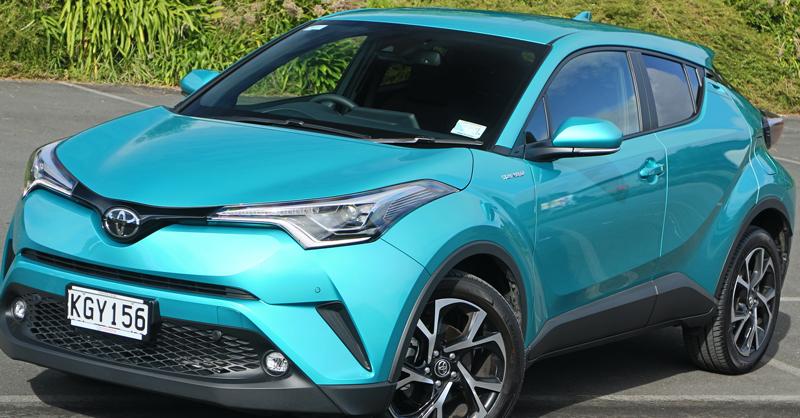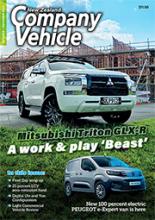Damien O’Carroll tests a brace of C-HRs in 2WD and AWD formats
It’s funny how spending a bit of time with a car can change your opinion of it. And the Toyota C-HR is a car that can do that in both its 2WD and AWD form, just not in the same way.
After the local launch I was initially disappointed by the C-HR. While it was generally impressive on the inside, looked great (yeah, that’s right) and possessed a lovely little chassis, the drivetrain just seemed to let it down so badly...
But here’s the thing – Toyota held the launch out on some winding country and coastal roads that journalists love and small engined CVT cars don’t do quite so well on.
So spending a week with a 2WD C-HR in its natural environment (the city) showed another, far more impressive side of its nature. The engine was eager and refined, the CVT not as annoying and its compact size made it an absolute breeze to skip around an urban environment in.
Then a few weeks later came the AWD version and my opinion reverted back to how I felt about it at the launch.
On an initial drive of the two at the launch, it seemed that the AWD system brought very little to the C-HR other than extra weight and spending a week in the two of the just drove that home.
While the 2WD C-HR was nimble and had enough power to scoot happily around town, the extra bulk added by the AWD system robs it of all of that. The difference in basic kerb weight between the two is 75kg, which may not seem like a huge amount, but then the little 1.2-litre turbo engine only has 85kW and 185Nm to haul it around with, so every kg counts. And it is more than enough to make all the difference here.
Speaking of the 1.2-litre turbo engine, it is a modern, smooth and remarkably refined little unit that is a delight around town, whilst the continuously variable transmission isn’t that bad around town, making for a super smooth and pleasant experience in the daily commute.
But even in the 2WD model it is not quite powerful enough on the open road, where it runs out of puff on hills and it is still rather sluggish off the mark.
You can take all these criticisms of the 2WD powertrain and multiply them by four for the AWD version.
The extra weight makes the AWD C-HR even more sluggish off the line and breathless on hills, while it even manages to blunt its acceptable round town performance.
All of this is made even more disappointing by the fact that the C-HR has a brilliant little chassis that is a blast to throw around. It boasts some great steering and is sharp and responsive, while also managing to still maintain impressive ride quality for such a small car.
The impressive ride is nicely complemented by the brilliantly comfortable and supportive seats, while the rest of the high quality interior is modern and pleasantly laid out, with some great shapes, lines and textures on show.
So why Toyota decided to stick an audio head unit that looks like a cheap aftermarket job in the middle of the dash is a mystery, particularly when an attractive and far nicer integrated one is in overseas models.
Then we get to the outside. While the looks are polarising, they certainly are incredibly distinctive and individual. There are so many interesting angles and lines going on over the exterior of the C-HR you could quite possibly own it for a year and still be seeing new things from different angles.
Personally, I love it – you can call it ugly, but you sure can’t call it bland, boring or unimaginative.
The C-HR lands in New Zealand in identical spec for both the 2WD and AWD models, with the AWD costing $2,000 more. This sees the C-HR’s already hefty $37,990 2WD price just about top $40K.
This makes the C-HR a rather expensive proposition in its segment and is yet another reason not to buy the AWD version.
While the 2WD C-HR is pleasant around town and can even manage to almost be fun on the open road, the heftier and pricier AWD brings literally nothing worth paying the extra for and even manages to make the C-HR quantifiably worse.
While there are the obvious safety and traction advantages to AWD, the C-HR’s traction and stability control systems do the majority of the heavy lifting for the AWD system anyway, so unless you spend a lot of time in the snow, then the 2WD version is definitely the one to go for every time.
_________
Specifications:
Body type Hatch
Drive FWD or AWD
Engine type Inline four-cylinder petrol turbo
Engine capacity 1.2-litres
Max power 85kW @ 5200rpm
Max torque 185Nm @ 1500rpm
l/100km (Combined) 6.4 (6.5 AWD)
C02 emissions 149g/km (151g/km AWD)\
Boot capacity 318 litres
Spare tyre Space saver
ANCAP rating 5 star
Price $37,990 ($39,990 AWD)



